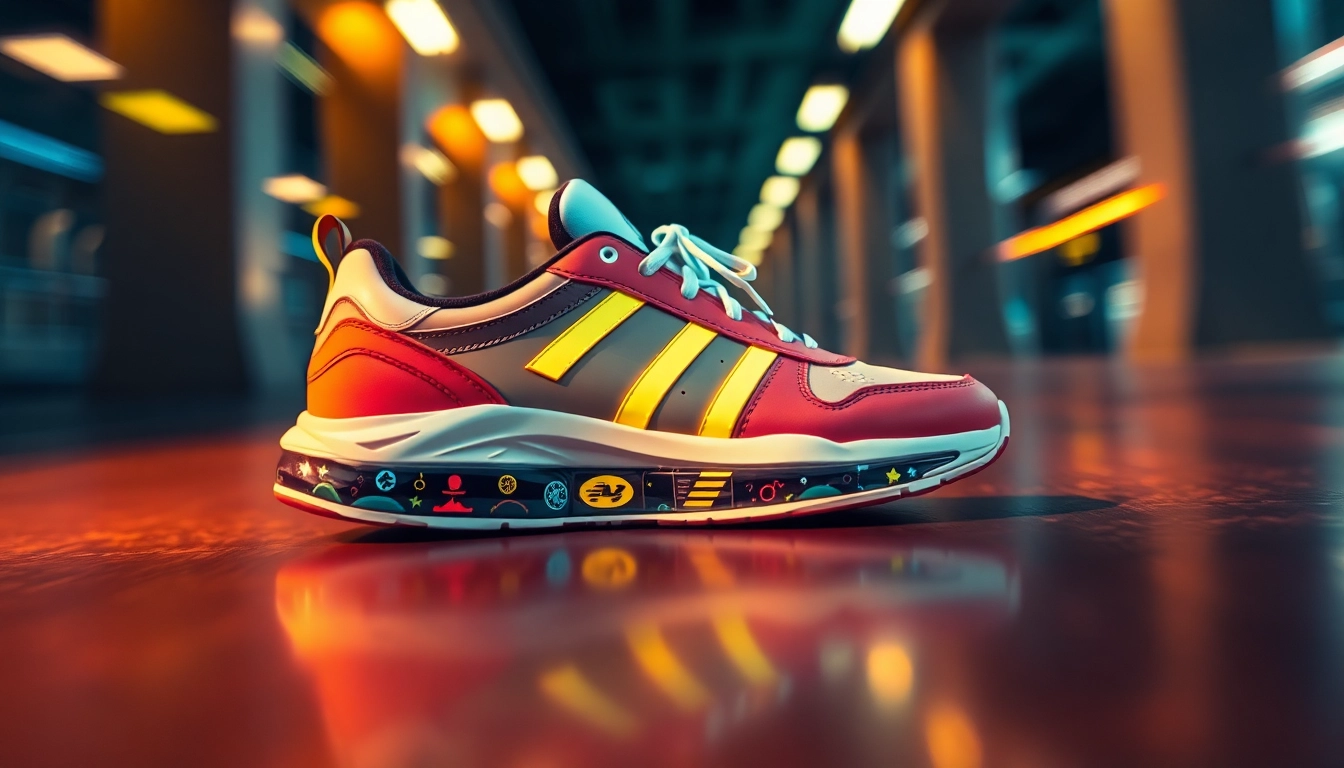
Understanding Sports Shoes
When it comes to athletic footwear, understanding the nuances of sports shoes is paramount for any active individual. Sports shoes are designed not only for specific activities but also with features that enhance performance and ensure comfort. This guide provides comprehensive information about sports shoes, helping you make informed choices tailored to your athletic needs. For more information on sports shoes, including various styles, brands, and user reviews, this article elaborates on their importance in your fitness journey.
What Makes a Sports Shoe Different?
Sports shoes differ significantly from regular shoes in several key areas, including design, materials, and functionality. Unlike everyday footwear, sports shoes are engineered to support dynamic movements and provide stability during various physical activities. Key characteristics include:
- Support: Sports shoes are built to support the foot’s arch and provide stability during movement, helping to prevent injuries.
- Cushioning: Adequate cushioning absorbs shock during high-impact activities, which is crucial for runners or athletes engaging in jumping sports.
- Flexibility: The design allows for lateral movements typical in many sports, ensuring the shoe moves with the foot.
- Durability: Constructed from robust materials, sports shoes are intended to withstand wear and tear during intense use.
The Importance of Fit and Comfort
Perhaps the most critical aspect of sports shoes is fit. A well-fitting shoe can enhance performance and prevent discomfort and injuries. A few pointers include:
- Right Size: Always ensure your sports shoes fit correctly. They should be snug without being restrictive, allowing about a thumb’s width of space at the front.
- Foot Type: Consider your foot’s arch (high, medium, low) when selecting shoes, as different designs cater to varying foot structures.
- Try Before You Buy: Walk or run in the shoes to assess comfort. Pay attention to any areas of friction or pressure.
Types of Sports Shoes Explained
Choosing the right type of sports shoe is essential for maximizing performance in specific activities. Some common types include:
- Running Shoes: Lightweight with ample cushioning, designed for forward motion.
- Basketball Shoes: Built with ankle support and traction for lateral movement and jumping.
- Cross-Training Shoes: Versatile shoes suited for a mix of activities like weightlifting, aerobics, and sports.
- Trekking and Trail Shoes: These shoes provide stability, traction, and support for uneven terrains.
Key Features to Look For
Material Considerations for Durability
The materials used in sports shoes greatly affect their longevity and performance. Here are some materials to consider:
- Mesh: Often used in the upper part, mesh allows for breathability and moisture-wicking.
- Synthetic Materials: Durable and water-resistant, synthetic fabrics provide lateral support and can stabilize the foot during dynamic movements.
- Rubber Outsoles: Essential for grip and traction, rubber soles are designed to withstand various environments, enhancing durability.
Cushioning Types and Their Benefits
Cushioning systems vary widely among different sports shoes, each offering distinct benefits:
- Neutral Cushioning: Ideal for runners with a neutral gait, these shoes provide balanced cushioning and support.
- Stability Cushioning: Designed for those with overpronation, these shoes have extra support features to stabilize the foot.
- Maximalist Cushioning: Offers plush cushioning for runners wanting maximum comfort during long-distance runs.
Support Features for Different Activities
Support features directly relate to the activity you’re engaging in. Common support features include:
- Arch Support: Essential for individuals with flat feet to prevent discomfort during sports activities.
- Heel Counters: Provide stability by holding the heel in place, which is crucial for sports requiring quick direction changes.
- Toe Caps: Protect the toes from injury, particularly important in sports like basketball or trail running.
Choosing the Right Sports Shoe for Your Sport
Running Shoes: Key Characteristics
When choosing running shoes, consider factors such as terrain, running style, and foot mechanics. Key characteristics include:
- Cushioning: Opt for models with sufficient cushioning if you run long distances.
- Drop Ratio: More significant drop ratios can impact your running form. Lower drop shoes encourage a more natural running style.
- Breathability: Look for breathable mesh uppers to prevent overheating during runs.
Basketball Shoes: Performance Insights
Basketball shoes must provide great ankle support and traction. Factors to consider include:
- Traction Pattern: The outsoles should have a reliable grip pattern for quick movements on the court.
- Midsole Cushioning: An effective cushioning system reduces impact and enhances comfort during jumps.
- Ankle Support: High-top options are favorable for enhancing ankle protection during lateral movements.
Cross-Training Shoes: Versatility and Use
Cross-training shoes must adapt to various activities. Look for:
- Versatile Cushioning: An adaptable cushioning system allows you to transition between different workouts.
- Stable Base: Essential for weight training, ensuring you feel grounded during lifts.
- Breathability: A lightweight design helps maintain comfort through diverse workouts.
Buying Sports Shoes: Tips and Tricks
Where to Shop: Online vs. In-Store
Both online and in-store shopping have unique advantages. In-store allows for immediate try-ons and hands-on assessments, while online shopping is convenient and often provides a broader selection.
- In-Store Advantages: Customers can physically try on shoes, assess fit, and evaluate comfort firsthand. Furthermore, store associates can offer expert advice.
- Online Benefits: The ability to read reviews, access a wider range of brands and models, and the convenience of delivery can outweigh the need for an immediate try-on.
How to Try Them On Effectively
When trying on sports shoes, follow these guidelines:
- Inspect the Fit: Walk and jog in place to test for comfort and support.
- Check for Pressure Points: Be attentive to any discomfort, particularly around the toe box and heel.
- Wear Appropriate Socks: Bring the socks you plan to wear during workouts to get an accurate feel of the shoe.
Understanding Return Policies
It’s essential to familiarize yourself with retailer return policies before purchasing, particularly when buying online. A good return policy allows you to trial the shoes in various conditions and return them if they don’t meet your needs. Look for:
- Time Frame: Policies should provide at least 30 days for returns.
- Free Returns: Some retailers offer free shipping for returns, making it easier to exchange sizes or styles.
- Trial Period: Certain brands offer a satisfaction guarantee or a trial period for testing the shoes.
Maintaining Your Sports Shoes
Cleaning Techniques for Different Materials
To prolong the life of your sports shoes, proper cleaning is key. Here are cleaning techniques, depending on the shoe material:
- Mesh Uppers: Brush off dirt and clean with a damp cloth. Avoid submerging in water.
- Leather Uppers: Use a leather cleaner or a damp cloth, and avoid harsh chemicals that can damage the material.
- Rubber Soles: Clean rubber soles with soap and water, using an old toothbrush to reach any grooves.
Storage Tips to Prolong Lifespan
Storing your sports shoes properly can help maintain their shape and function. Consider these storage tips:
- Keep Away from Heat: Avoid leaving shoes in hot locations, as heat can degrade materials.
- Use Shoe Trees: Applying shoe trees helps retain their shape when not in use.
- Store in a Dry Place: Ensure your shoes are stored in a dry and well-ventilated area to prevent mold growth.
When to Replace Your Sports Shoes
Understanding when to replace your sports shoes is crucial for performance and injury prevention. Signs that it’s time to consider new shoes include:
- Worn Tread: If the rubber outsoles are significantly worn, it’s time for a replacement.
- Loss of Cushioning: If you feel more impact on your feet during activity, the cushioning may be compromised.
- Discomfort or Pain: Increased discomfort, blisters, or pain during or after activities can indicate that your shoes need replacing.





